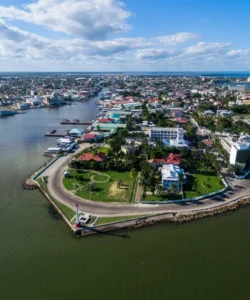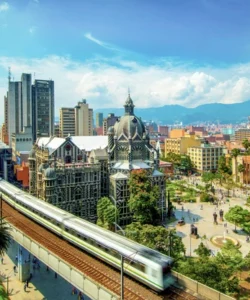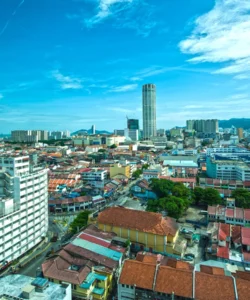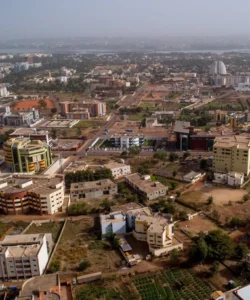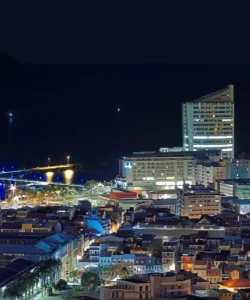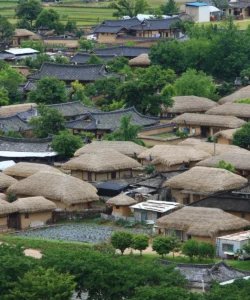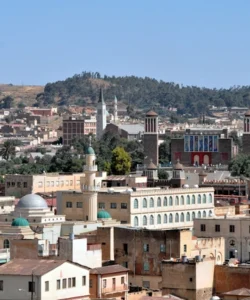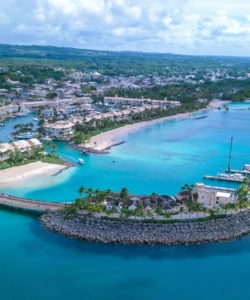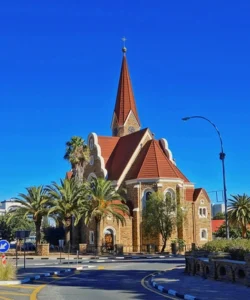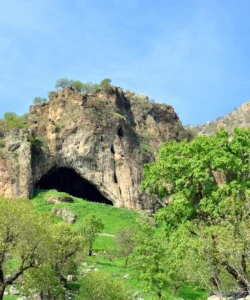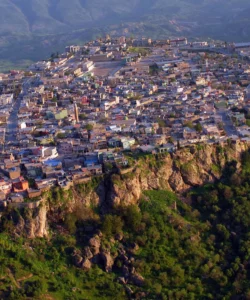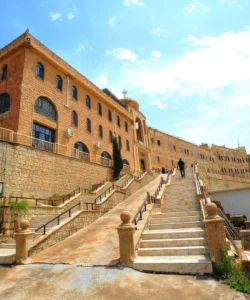The Mesa of Amedi is an ancient town located in the Kurdistan Region of Iraq, famous for its dramatic and highly defensible location atop a flat-topped crag, or mesa. This unique geography has defined its history for millennia, making it a natural fortress and a cultural crossroads for various civilizations.
Name: Mesa of Amedi (also known as Amedi, Amadiye, or Āshib)
Address: The town is in the Duhok Governorate of the Kurdistan Region of Iraq, approximately 15 kilometers from the border with Turkey. It is situated on a mesa that rises dramatically from the Great Zab river valley.
How to Get There:
While the Kurdistan Region of Iraq is generally more stable than the rest of the country, travel to Amedi can still be challenging and requires careful planning. The following information is based on tourist information from more stable periods.
- By Air: The closest major international airport is Erbil International Airport (EBL). From Erbil, a car or taxi is needed for a several-hour drive to Duhok and then on to Amedi.
- By Road: Amedi is accessible by road from the city of Duhok, which is about an hour and a half away. Taxis and local shared taxis are the primary means of transport.
- On-Site: The town itself is small and easily explored on foot. A single road leads up to the mesa, while an ancient, steep footpath and gate remain as a historical entrance.
- Best Time to Visit: The spring (March to May) and autumn (September to November) months are ideal, as the weather is milder and more comfortable for outdoor activities.
Landscape and Architecture:
The town’s architecture and landscape are a direct reflection of its unique geographical position. The mesa itself is the most prominent feature, with the town’s buildings seamlessly integrated into the natural fortification.
- A Natural Fortress: Amedi is built entirely on a mesa, which rises about 400 meters above the surrounding valley floor. This natural elevation provides an incredible, easily defensible position with steep cliffs on all sides. The town’s small size (only about 1,000 meters long by 550 meters wide) has meant that space has always been at a premium, and the urban plan is tightly packed.
- The Bahdinan Gate: One of the most famous historical landmarks is the Bahdinan Gate (also known as the Mosul Gate), one of the last remaining ancient entrances to the city. This fortified portal, carved into the cliffs, was an engineering marvel designed to make entry difficult for invaders. The gate’s design forced those entering to make several steep, ninety-degree turns.
- Great Mosque of Amedi: At the center of the town is the Great Mosque of Amedi, which dates back to the 12th century. The mosque’s iconic minaret, erected in the 15th century, is a prominent feature of the skyline and is often compared to the minaret of the Great Mosque of al-Nuri in Mosul.
- Multi-Religious Heritage: The town’s long history as a center of religious coexistence is visible in its ruins. Evidence of a synagogue, churches, and a tomb attributed to the biblical prophet Ezekiel can be found alongside the mosques, reflecting the peaceful integration of its historic Muslim, Christian, and Jewish communities.
- Qubahan Madrasa: The ruins of the Qubahan Madrasa, an ancient Islamic school founded in the 14th century, are also a key historical site. It was once a center of learning and scholarship for the Bahdinan Emirate.
What Makes It Famous:
- Unique Mesa Location: The Mesa of Amedi is globally famous for its unique and spectacular geographical location. The image of a city perched precariously on a flat mountain top is a powerful and memorable one.
- Historical Crossroads: The town has been a strategic location for millennia, a crossroads for various empires and civilizations, including the Assyrians, Medes, Parthians, Sasanians, and Muslims. Its long and layered history is a testament to its importance.
- Capital of the Bahdinan Emirate: For nearly 500 years (1376-1843), Amedi served as the capital of the semi-autonomous Bahdinan Emirate, a powerful Kurdish principality. This period is considered its “golden age,” and many of its most famous structures, including the Great Mosque, date from this time.
- A Symbol of Coexistence: Amedi is renowned for its history of peaceful coexistence between different religions and ethnicities, a significant achievement in a region often defined by conflict.
- Archaeological and Scenic Beauty: Visitors are drawn not only to its rich history but also to its breathtaking natural beauty. The panoramic views of the surrounding valleys and mountains from the mesa are a major attraction.
Differences from Some Other Wonders:
- Natural and Built Fusion: Unlike a single architectural wonder (like the Great Ziggurat of Ur) or a purely natural one (like the Iraqi Marshes), Amedi’s fame is a perfect fusion of natural geography and human ingenuity. The city’s identity is inseparable from the mesa it sits upon.
- A Living, Inhabited Site: Unlike ancient ruins like Hatra or Ashur, Amedi is a living, inhabited town. The fact that people have lived in this spectacular, but difficult, location for over 5,000 years, and that a community still thrives there today, is a central part of its wonder.
- Focus on a Specific People Group: Its identity is deeply tied to the Kurdish people and the history of the Bahdinan Emirate. While other Iraqi wonders have a broader Mesopotamian or Islamic context, Amedi’s story is a unique and important chapter in Kurdish history.
- Preservation of Ancient Character: Due to its limited space for expansion, Amedi has been forced to retain much of its ancient character and street plan, a rare feature that distinguishes it from other cities that have expanded and been built over repeatedly.
Mesa of Amedi Photos:
















